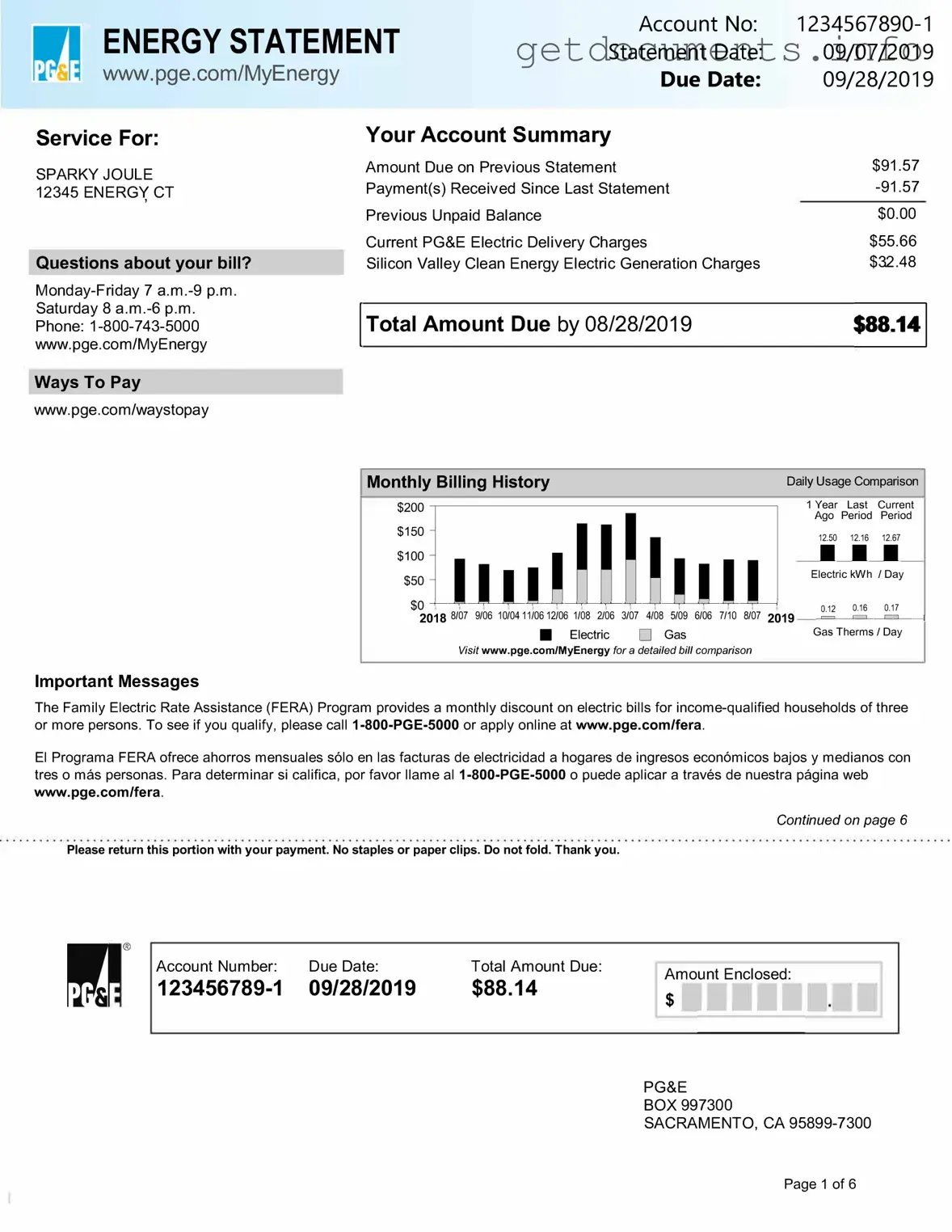The Utility Bill form serves as an essential document for individuals and businesses alike, providing a clear record of utility usage and associated costs. This form typically includes vital information such as the account holder's name, service address, and billing period, which helps to identify the specific time frame for the charges incurred. Additionally, it outlines the types of services provided, such as electricity, water, gas, or sewage, allowing users to understand their consumption patterns better. Payment details, including the total amount due and any applicable late fees, are also prominently featured. This form may also provide options for payment methods and due dates, ensuring that customers are informed about how to settle their bills on time. In some cases, the Utility Bill form may include information about energy-saving programs or assistance options for those who may be struggling to pay their bills. By consolidating this information, the Utility Bill form plays a crucial role in helping individuals manage their utility expenses effectively.
